Showing 21–30 of 47 results

This book aims at developing an exclusive literary framework to analyse the Indian queer literary works. It helps in excavating the convoluted layers and subversive potential of queer identities, and in studying the efforts made by the Indian writers to homosexualize various so-called normative spaces.
The invisibility accorded to queer literary works in India has a systematic sinister agenda of silencing. Such a hidden target can be countered only by cataloguing the still unexplored queer texts in various Indian languages and by developing unique critical tools to analyse these texts in a such a manner that helps in excavating the convoluted layers and subversive potential of queer identities.
This book aims at developing an exclusive literary framework to analyse the Indian queer literary works. In all, there are seven chapters which deal with the themes of plurality of lesbian existence, ambivalent adaptation techniques adopted by the writers to grant visibility to subaltern sexualities, overlapping of class and homosexuality, the development of exclusive queer aesthetics by inversion of accepted mode of literary language, imagery and techniques, the doubly marginalized identity of lesbian diaspora and the specific rift between lesbianism, feminism and queer activism in Indian context as presented in literary studies.
It also deals with the issues of biphobia, violence on hijra identity (perhaps one of the most marginalized identity in LGBTQ movement), the depiction of symbiotic relationship between space, sexual identity and sexual citizenship in Indian literary texts and the efforts made by the writers to homosexualize various so-called normative spaces.
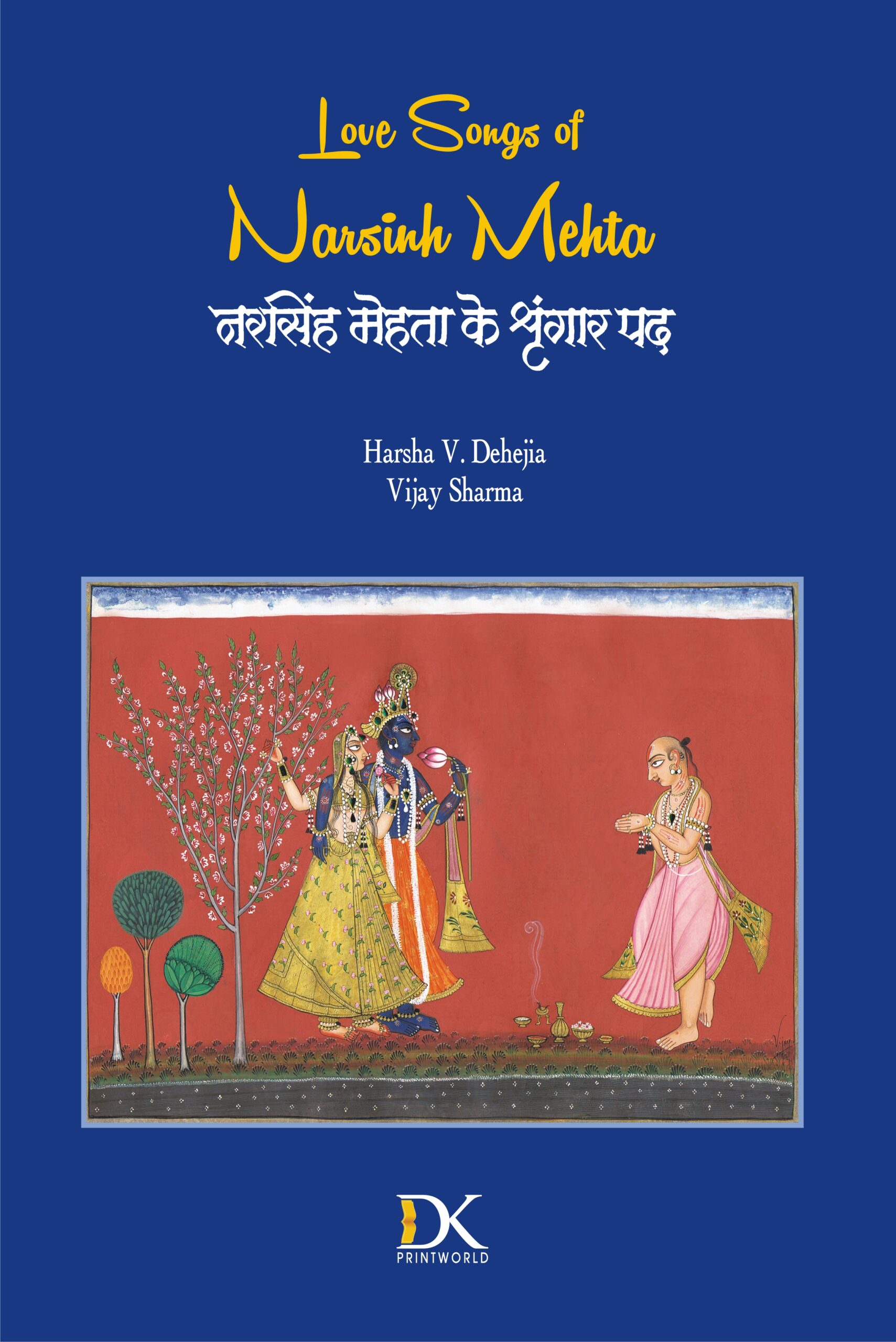
Love Songs of Narsinh Mehta is a commentary on the love songs of Narsinh, adi-kavi of Gujarat. Narsinh sings the glory of Krishna in total devotion as if Krishna is sitting in front of him. For him, Krishna is divine and human, both at the same time. Being Krishnas love, he brings in all emotions and cues of devotional love to his poetry.
Love Songs of Narsinh Mehta is a commentary on Narsinh Mehtas love songs. Narsinh (1408-65), a Vaishnava bhakti poet of medieval India, is considered as the adi-kavi of Gujarat. He is also regarded as a shringara kavi, a poet of romance. The quintessence of his bhakti is prem and his prem has inherent bhakti, and therefore his poetry is regarded as shringara bhakti kavya. Essentially shringara is the romantic celebration of the other, and when Narsinh’s other is none other than Krishna, his shringara kavya becomes Krishna bhakti, where Krishna is both divine and human, at the same time. Singing for Krishna, Narsinh celebrates his swami through amorous verses and divine surrender like Jayadeva.
He sat in a temple and relentlessly sang for his Lord, living through absolute poverty. Nothing made him more jovial than singing the glory of his Krishna. The only man for Narsinh is Krishna, and for the latter Narsinh is a woman at heart. Narsinh, through his songs, brings in the cue of all romantic feelings and moments, recreates the idyllic Vrindavana in ones mind, and he returns that Vrindavana a Vaikuntha with the footfalls of his Krishna.
Through this commentary, the author Harsha V. Dehejia introduces one to the fullness of Narsinhs poems, thereby making one known to Narsinh in and out.
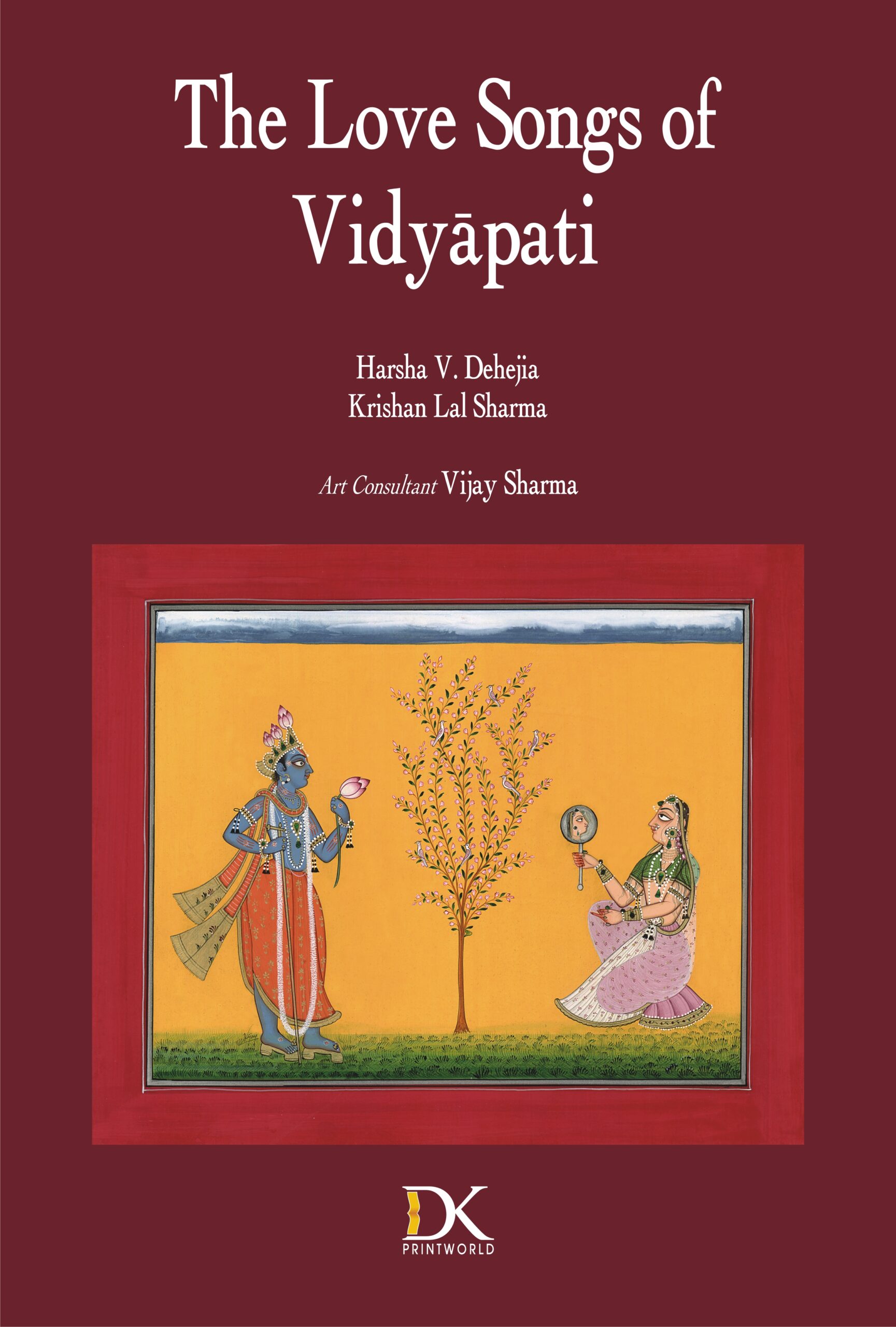
This portfolio, based on the ten Maithili love songs of Vidyapati, presents lovely paintings on the varied love moods of Radha: her sensuous charm, innocence, longing for Krishna, surrender to love, etc.
Vidyapati (c. 13521448), called second Jayadeva in his lifetime, is immersed, charged and inspired by the love of Radha and Krishna. He wrote emotionally-intensive love songs in Maithili, for the queens of Shiva Simha, his patron, and the common folk. Though drawn inspiration from Jayadeva, more than him, Vidyapati presents in his poetry a rare, tender and sensitive understanding of Radhas psyche. In his love songs Radha, not Krishna, is in the centre stage and through his nayika Vidyapati is reaching out to each and every woman in Mithila.
Vidyapati presents his songs from a womans heart, and describes his nayikas slowly awakening youth, her sensuous beauty, her coyish charm, her naïve innocence, her surrender to love and her anguish on being neglected. She is invariably sensual, spiritual, physical and emotional. Though she did not inspire painters of the time, she ruled the hearts of the people of Mithila. Vidyapatis love songs are written in honeyed words and are sung with mellifluous notes in homes, fields, chowks and havelis, across eastern India. And thus he still rules their heart.
This portfolio, based on the ten love songs of Vidyapati, presents lovely paintings on the varied love moods of Radha, the love queen. In doing so, different artists have displayed their dexterity in Jaipur, Caurapancashika, late Mughal, Manaku, Kishangarh, Jain, Kangra and Basohli styles.

India is a land where spiritual masters and mystics have blossomed from time to time, sharing their spiritual experience and knowledge for the benefit of all. This book throws light on a rarely-studied aspect of Indian spirituality, its women mystics and will be useful to all those interested in spirituality or in studying it as a subject.
India is a land where spiritual masters and mystics have blossomed from time to time, sharing their spiritual experience and knowledge for the benefit of all. They have explored a variety of spiritual, religious and philosophical dimensions to unravel the meaning of existence and significance of life. This book throws light on a rarely-studied aspect of Indian spirituality, its women mystics. The work is an account of the life of a master mystic, Shiva Yogini Amma, a woman who traversed new realms of experience in her spiritual quest. It is a record of her life from her birth to her attaining the nirvikalpa samadhi and after, and her teachings. It details the process of her spiritual realization; a unique experience exploring spiritual states with a foreknowledge and mastery. It explains her understanding of spiritual concepts relating to form and formlessness, maya, reality. It deals with her method of using the body and mind to attain the goals of the spirit. Based on one of her first woman disciples, Satyananda Yogini’s recollections, the account elaborates on life in Shiva Yogini Amma’s ashrama. It examines her growth as a samnyasin by delving into her daily activities, trances, interactions with disciples, and her teachings, particularly yoga instructions, to learners. The book will be useful to all those interested in spirituality or in studying it as a subject.
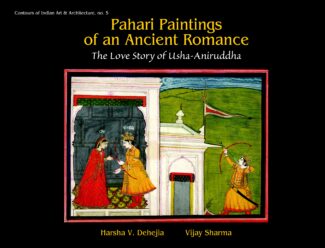
The book exhibits paintings which depict an ancient love story of India involving Krishnas grandson Aniruddha and Banasuras daughter Usha. Depiction of Garudas narration of the story to Krishna, Balarama and Pradyumna during their battle with Banasura, and the Pahari kalam of painter Ranjha create lyrical romantic scenes and gory battles with equal ease.
Among ancient love stories of India, that of Usha-Aniruddha has a pride of place. Being a part of various Puranas such as the Harivamsha, Bhagavata and Vishnu Puranas it acquires a sacrality and legitimacy. We are privy to the interaction of all the three gods, namely Vishnu, Shiva and Brahma. The highlight of the story is the romantic involvement of Krishsas grandson Aniruddha and Banasuras daughter Usha. Between scenes of a pitched battle between Banasura and Krishna, where a mighty demon and his army battle with Krishna, Balarama and Pradyumna and interspersed with long conversations with Garuda, the narrative takes us to tender scenes of romance as well as a birds-eye view of Shonitpur and Dvaraka. The Puranic narrative is brought alive by the graceful Pahari kalam of Ranjha, son of Nainsukh, who renders the story with finesse and precision and creates lyrical romantic scenes and gory battles with equal ease. The book brings together for the first time the entire series from the Bhuri Singh Museum of Chamba in Himachal Pradesh but also features folios from other museums and private collections as well as a critical look at the painter and the patron of this series. The book is a visual treat.
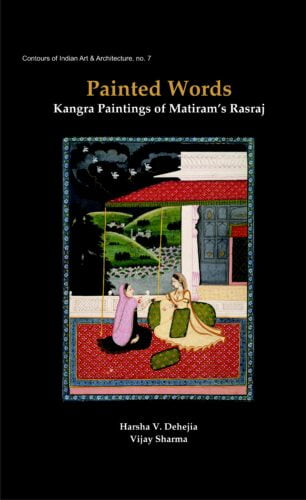
Matiram’s sonorous poetry embellished by Purkhu’s sensuous imagery, transport us into the rarefied realm of the Rasraj, where romance interwoven with poignancy, bring alive the emotion-laden shringara rasa. Both lyrics and imagery have been seemlessly sculpted into visual poetry.
No celebration of ritikavya can be complete until we have enjoyed the sonorous poetry of Matiram and the sensuous images of Purkhu.
With well sculpted words and lyrical rhythms Matiram takes us into the rarefied world of the nayak and the nayika, their amorous exchanges, the sensuality of loving glances, the charged moments of romantic feelings, the heart throb of belonging, the poignancy of longing and above all the fulfilment of desire.
Line by line and doha after doha, Matiram leads us into the emotionally charged world of shringararasa and for those of us who are chastened by harishringara we go from one level to another till we hear the flute of Krishna.
And when we find that these sonorous words of Matiram have been brought alive by none other than Purkhu and his school of painting under the patronage of Sansar Chand of Kangra our joy is doubled and Matiram’s words become visual poetry.
In the hands of Purkhu words become lines, emotions take on a colour and desire becomes palpable through the magic of his kalam.

Krishna Steals the Parijata (Parijataharana) tells the story of Krishna forcibly taking away Parijata from Indra to make Satyabhama happy, which finds expression in the paintings of different kalams Chamba, Palam, Early Kangra, Mature Kangra, Bundi, Bikaner and Nepal from different sources.
Krishna Steals the Parijata (Parijataharana) is a collection of a few accounts, edited by Harsha V. Dehejia, on Krishna forcibly taking away Parijata from Indra, which finds expression through the paintings of different kalams. Christopher R. Austin relates this event to the citations and narrations in Mahabharata and Harivamsha, wherein the focus is on Krishnas effort to appease his perturbed wife Satyabhama, by fulfilling her desire to have Parijata from Indras abode. Mahendra Kumar Mishra approaches this incident from Sarala Mahabharata angle. Here the narrative and episode are little different though the centre theme and characters remain the same.
The third narrative is in Hindi by Narmada Prasad Upadyaya. He approaches this story from a different viewpoint that by forcibly taking away the Parijata tree from Indraloka, Krishna broke Indras Himalayan pride. The main characters in the episode are same here too: Krishna, Indra and Satyabhama. In the final article, Harsha V. Dehejia provides a visual narrative account of the event. The story looks almost similar to that of Austin with little more narration and a few additional characters. The sequentially given paintings tell the story faster than the literature.
In a nutshell the book is an exemplar attempt to visually covey a well-known, well-rooted story where Krishna is the central character.
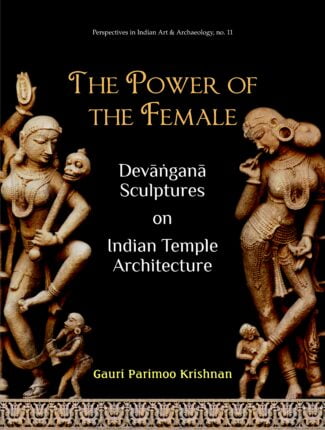
Sculptures of numerous engaging devanganas the surasundari, apsaras and alasakanya figures decorate walls, ceilings and doorways of classical structures in India. The book offers dynamic meanings of these figures in religious and cultural consciousness of India and how they symbolize and illustrate the power of the female in Indian traditions.
This book is an offering to New Art History taking the study of Indian classical sculptural art and traditional Indian iconography to newer heights of interpretation. Sculptures of female figures in classical Indian architectural traditions have enjoyed a special placement and significance. Numerous engaging images of devanganas the surasundari, apsaras and alasakanya figures decorate walls, ceilings and doorways of Hindu temples in India. Viewing the devangana sculptures as a continuation of the yaksi sculptures of Buddhist and Jaina monuments and the concept of primordial mother goddesses of the Vedic times, this challenging work on the devangana sculptures studies the morphology, iconology and semiotic meanings of the devangana figures and their placement in monuments of Gujarat, Rajasthan and Madhya Pradesh between the eighth and twelfth centuries ce.
In a path-breaking effort, the work focuses not on the much-discussed erotic and sexual connotations but explores their dynamic meanings in the religious and cultural consciousness which help to symbolise ßthe power of the femaleû in representational artistic traditions of India. For this, copious architectural and religious texts are examined. With more than 250 illustrations of temple sites and detailed sculptures, this book enquires into the imagery of these figures. A significant aspect of the research is its critiquing of the existing literature on the subject to come up with novel viewpoints and use of tools like dhvani theory, psychoanalysis and feminism to interpret the devangana sculptures.
The book will benefit young researchers, cultural enthusiasts and erudite scholars of Indian art and architecture focused on religious and cultural significance of Indias sculptural heritage.
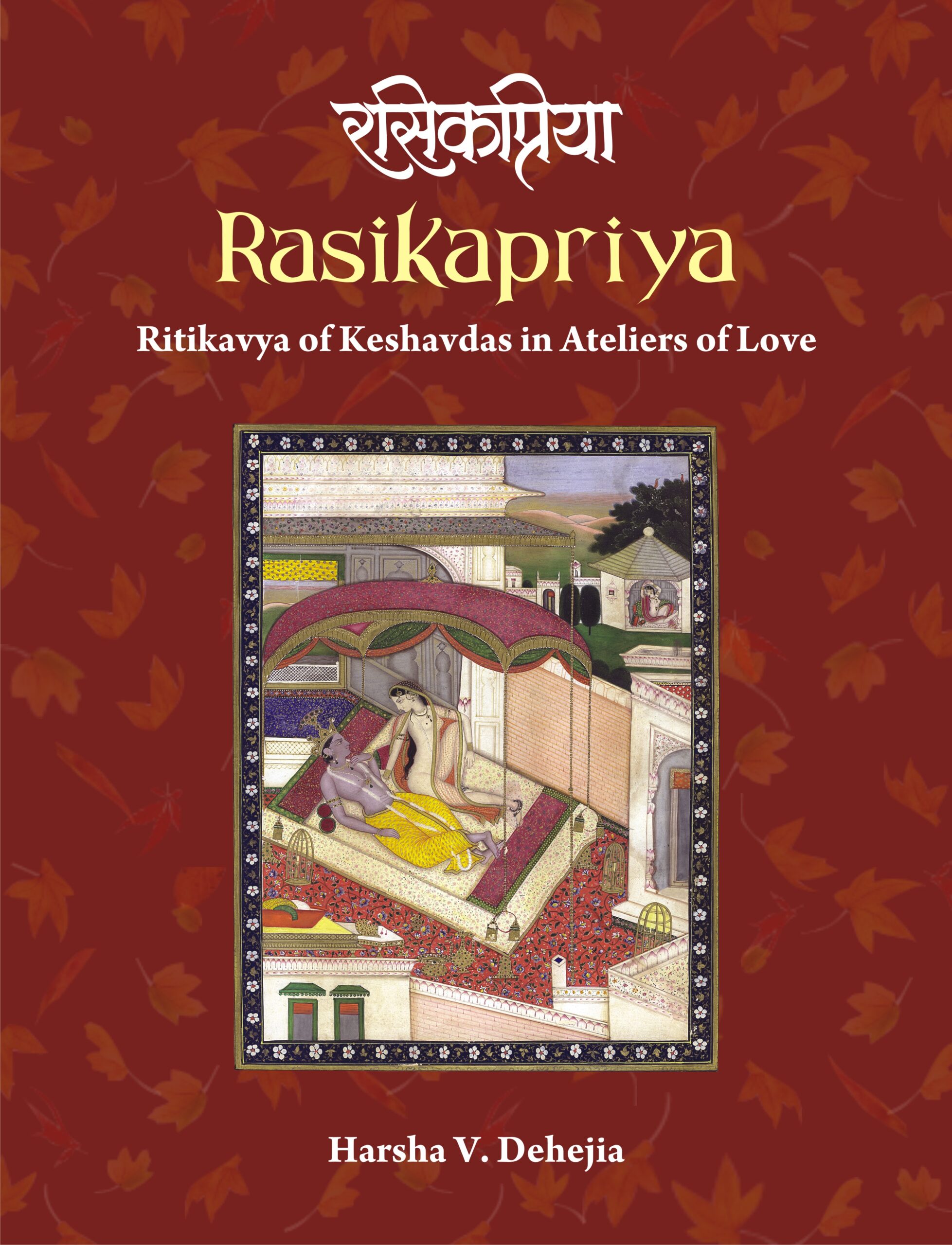
This book brings, for the first time, the translation of the entire text of Rasikapriya of Keshavdas in English with more than 400 paintings. In its pages are whispers of Krishna and Radha, and the hushed voices of the sakhis as they celebrate romantic moments of longing and belonging in the regal splendour of pranaya mandaps of havelis or verdant and idyllic groves.
Rasikapriya is a lakshan granth, a foundational text, of ritikavya or mannered poetry, and Keshavdas is the father of ritikal. It was the early seventeenth century, and in the court of Raja Indrajit of Orchha in Bundelkhand, Keshavdas, the court-poet, would recite short romantic verses and the gathered connoisseurs of poets, musicians and dancers would respond, and the atelier would resonate with the many textures and hues of shringara. This was the beginning of Rasikapriya, a text that is still central in the celebration of love. Keshavdas was a poets poet and he created a monumental text that remains the gold standard of ritikavya even today. And if that was not enough Rasikapriya inspired artists to create paintings illustrating its many dohas and savaiyas even in the lifetime of the poet.
Artists in the ateliers of Malwa, Mewar, Bikaner, Bundi and Kangra, among others, were touched by the evocative poetry of Rasikapriya and created paintings that were visual poetry. The names of Sahibdin of Mewar, Ruknuddin of Bikaner and Purkhu of Kangra stand out as artists that brought Rasikapriya to life through their mellifluous kalams.
Rasikapriya remains one of the most profusely illustrated texts in India and finds a place in collections of museums and individuals alike all over the world. This book brings together, for the first time, the translation of the entire text in English along with more than 400 paintings collected from a variety of sources. In its pages are whispers of Krishna and Radha and the hushed voices of the sakhis as they celebrate romantic moments of longing and belonging in the regal splendour of pranaya mandaps of havelis or verdant and idyllic groves. And as readers of this book recreate the music and the splendour of this text they cannot remain untouched by the sensuality and spirituality of shringara rasa and affirm that in celebrating the loves of Krishna one is never far from bhakti.
The book is a visual delight, a connoisseurs companion and a reference manual for scholars.
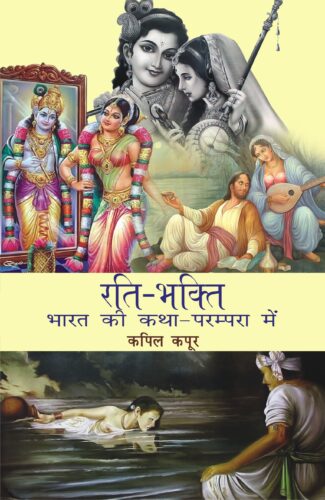
The concept of love-devotion is visible since ancient times in Indian history. In the poems and narrations of love-devotion human love has been depicted in the form of divine love. The love is permanent sentiment of Shringara rasa. Shringara rasa is of utmost importance in the tradition of textual contemplation.
There is intense interrelationship of love and devotion in narrative tradition of India. The concept of Rati-bhakti (love-devotion) is visible in Indian history since ancient times. Love and devotion are two facets of the one and the same fact. In the poetry and prose of Rati-bhakti, the human love is regarded as divine. Here, God and devotee are seen as lovers and, on the other hand, lovers are considered as the form of God himself.
The knowledge of Shastras, not being accessible to all, is propagated through narration. There are unlimited treasures of narratives in all languages and scholarly traditions of India as well as various themes related to manhood-quartet of narration-treasure. In this book, the main focus is on Rati-bhakti (devotion to love). In the cogitation of poetry-text, shringara rasa is foremost and the fundamental one for thinkers like Bhojaraj. The permanent rasa of shringara is love and how this is accomplished in shringara and devotion, is beautifully depicted in this book.
In the folk tales of Punjab, the narrators/poets of Rati-shastra/narrations see love-adorable in divine form and in devotional narrations and poetry, the poets and narrators see their God as their lover or beloved. This love-devotion tradition originated in India in the seventh century ce through the Tamil Alvars in their prabandhas. This tradition remained alive till nineteenth century in the folk tales of Punjab. Since then, owing to Western influence, the love is seen as lust in place of devotion.
In this book the contemplation has been done on tradition, intellectual tradition, the knowledge of narration and means of narratives, the relationship between knowledge and narratives.
This book sould prove to be thought-provoking and interesting for students and scholars of philosophy, language and literature as well as for the common readers.
| There are no products |